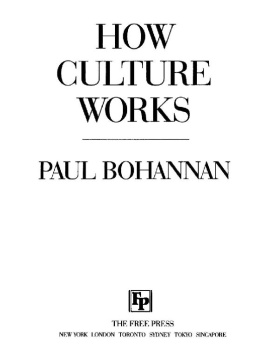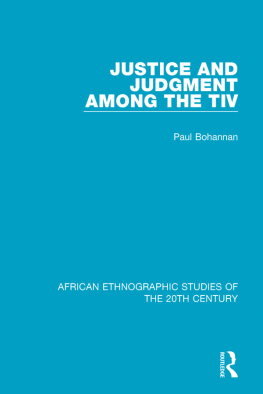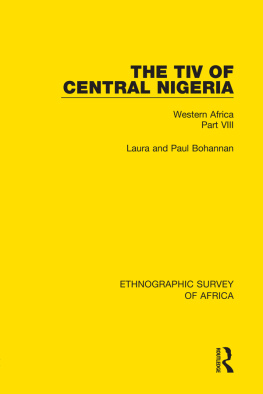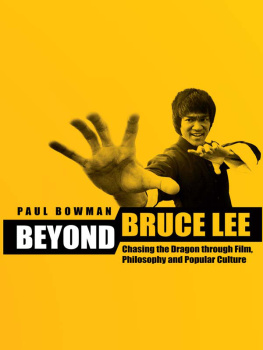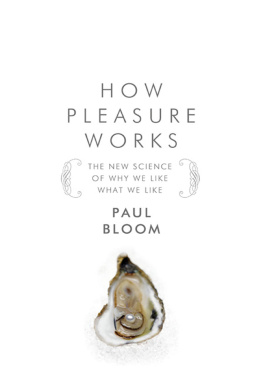Paul Bohannan - How Culture Works
Here you can read online Paul Bohannan - How Culture Works full text of the book (entire story) in english for free. Download pdf and epub, get meaning, cover and reviews about this ebook. year: 2010, publisher: Free Press, genre: Romance novel. Description of the work, (preface) as well as reviews are available. Best literature library LitArk.com created for fans of good reading and offers a wide selection of genres:
Romance novel
Science fiction
Adventure
Detective
Science
History
Home and family
Prose
Art
Politics
Computer
Non-fiction
Religion
Business
Children
Humor
Choose a favorite category and find really read worthwhile books. Enjoy immersion in the world of imagination, feel the emotions of the characters or learn something new for yourself, make an fascinating discovery.
- Book:How Culture Works
- Author:
- Publisher:Free Press
- Genre:
- Year:2010
- Rating:4 / 5
- Favourites:Add to favourites
- Your mark:
- 80
- 1
- 2
- 3
- 4
- 5
How Culture Works: summary, description and annotation
We offer to read an annotation, description, summary or preface (depends on what the author of the book "How Culture Works" wrote himself). If you haven't found the necessary information about the book — write in the comments, we will try to find it.
How Culture Works — read online for free the complete book (whole text) full work
Below is the text of the book, divided by pages. System saving the place of the last page read, allows you to conveniently read the book "How Culture Works" online for free, without having to search again every time where you left off. Put a bookmark, and you can go to the page where you finished reading at any time.
Font size:
Interval:
Bookmark:

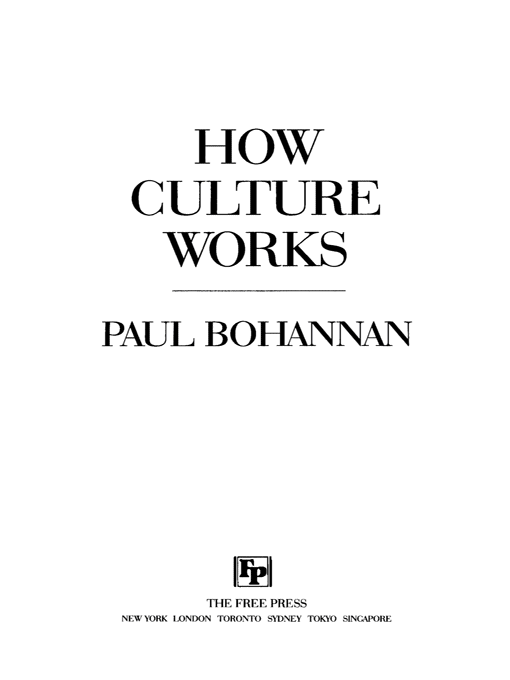
Copyright 1995 by Paul Bohannan
All rights reserved. No part of this book may be reproduced or transmitted in any form or by any means, electronic or mechanical, including photocopying, recording, or by any information storage and retrieval system, without permission in writing from the Publisher.
The Free Press
A Division of Simon & Schuster Inc.
866 Third Avenue, New York, N.Y. 10022
www.SimonandSchuster.com
Printed in the United States of America
printing number
1 2 3 4 5 6 7 8 9 10
Library of Congress Cataloging-in-Publication Data
Bohannan, Paul.
How culture works / Bohannan.
p. cm.
Includes bibliographical references and index.
ISBN 0-02-904505-3
eISBN 978-1-451-60229-6
1. Culture. 2. Social behavior in animals. I. Title.
HM101.B6319 1995
306dc20 94-31733
CIP
Theres no limit
to how complicated things can get
on account of
one thing leading to another
E.B. WHITE
For well over a hundred years, culture has been a substantivea noun. It either did things or things happened to it. It existed, but it was inert.
The call has been made by many to examine culture as a process. The calland little more. The callers dont go on to tell you how to do that.
Culture does not have a useful companionate verb, as life has its cognate, to live. Leslie White tried to supply it, but what he did was turn the noun culture into the verb to culture. He didnt have any takers. In part, he was ahead of his time. But he had an even greater strike against him: he tried to use the word as a variant of itself.
In the present exercise, culture is a verb more in the conceptual than in the grammatical sense. I have found the word culturize useful in some places in this book, but its meaning is restricted; certainly it does not provide an analogy to the life/live situation.
Two assumptions underlie this exercise:
there is a time dimension to all culture, and
one state of culture often leads to another (in ways that do not, as well as ways that do, imply cultural evolution).
I am beginning with something as simple as a flowchart, a process that is today followed by many computer programmers to assist in planning the timing and flow of projects. As far as I am aware, the first flowchart in anthropology was that given by Arnold van Gennep in 1908.
There is one additional set of ideas on which I build: that of the cultural trap, which as far as I know was introduced by John Platt. For example, if agricultural methods that ruin the soil are pursued without change, those agricultural methods become a cultural trap; if they are not altered the whole culture-environment arrangement will break down. Just so, ideas of law or government that work for communities of a few hundred people must be changed when the same communities grow to several hundred thousand and their family and religious pressures no longer assure social equity.
The history of the world can be seen as the study of cultural processes: those that create adjustments to changed environmental conditions on the one hand, and those that lead to cultural traps on the other. Some cultural traps (like power struggles as we hand over offices) have been overcome, at least in some places. Others (like ethnicity) have not. We are surrounded today by culture traps, as every cultural tradition has always been surrounded by such traps. Only if we recognize those traps, which means understanding the way our actions and our beliefs turn into traps, and actively seek exits or solutions or both, can our civilization survive.
Ancient Greek civilization foundered on a social trap. Having invented the city-state, the Greeks stuck to their guns and could not take the next step: agreeing on ways for city-states to cooperate and coexist. Communist civilization ended in a social trap very like it: having invented a new form of planned economy, they were unable to adapt it to changing world conditions, particularly to the information revolution.
But, what about us? Do we know enough about social and cultural process to avoid the traps?
In an important sense, this book is about recognizing and avoiding cultural trapswhich, here, include the traps of social organization. We cannot avoid these traps without understanding just how we (like everybody else) walk into them. Anthropology and the other social sciences know enough today so that we should be able to get on with the job. The secret is in simplifying what we know to the point where we can apply our knowledge successfully and people will not confuse our applying it with political manipulation.
Works of social science can be ranked along a scale from simple to obfuscating. Obfuscating is easier. I have tried hard to be simple in this book. Sometimes simple spills over into simplistic or obvious. But restating the obvious in a new context sometimes clears the air.
The gravest need in social science is a good program of synthesis. We know a lot. There is an awful lot of theory out there, some of it even good. There are libraries of good ethnography, many of them all but unread.
But systematic synthesis of what we know is in short supply. Transferring insights from one realm to another so that our whole enterprise can become less fragmented is a worthwhile goal. It can be achieved only by gaining simplicity. We need ways to get our initial premises as clear as our subsequent logic, and to make simple, clear statements about how it all fits together.
And it is only with such synthesis that we can recognize cultural traps and begin to overcome them. In this book, I ask how culture works. It is akin to the medical profession asking how the human body works.
HOW CULTURE WORKS

Culture in the Natural World
Culture is as natural as life. We shortchange ourselves if we view culture as artifice to be opposed to nature. On the other hand, we must separate cultural information from genetic information. The two are in no sense opposed; indeed, the confusion arises because they are so totally commingled in our experience. In the course of growing up, we learn culture as ways to exercise our genetic capacities.
We cannot deal with culture as long as we oppose it to nature rather than accept it as an integral part of nature, or as long as we confuse it with our genetic endowment (which some biologists still do) or with Gods will (which some fundamentalists of all faiths always have).
When we finally learn to deal with culture as part of the natural world, but a part separable from our biology, we can question it, ask how it works, take advantage of parts of it, and learn to avoid some of its manifestations, just as we deal with any other natural phenomenon.

Matter, Life, and Culture
People are subject to constraints that arise from the rules of matter, the rules of life, and the rules of culture. Matter is what everything in the universe is made of, including usthe elemental constituents of human bodies follow the rules of chemistry and physics. Until life is added, matter is inert.
Font size:
Interval:
Bookmark:
Similar books «How Culture Works»
Look at similar books to How Culture Works. We have selected literature similar in name and meaning in the hope of providing readers with more options to find new, interesting, not yet read works.
Discussion, reviews of the book How Culture Works and just readers' own opinions. Leave your comments, write what you think about the work, its meaning or the main characters. Specify what exactly you liked and what you didn't like, and why you think so.

